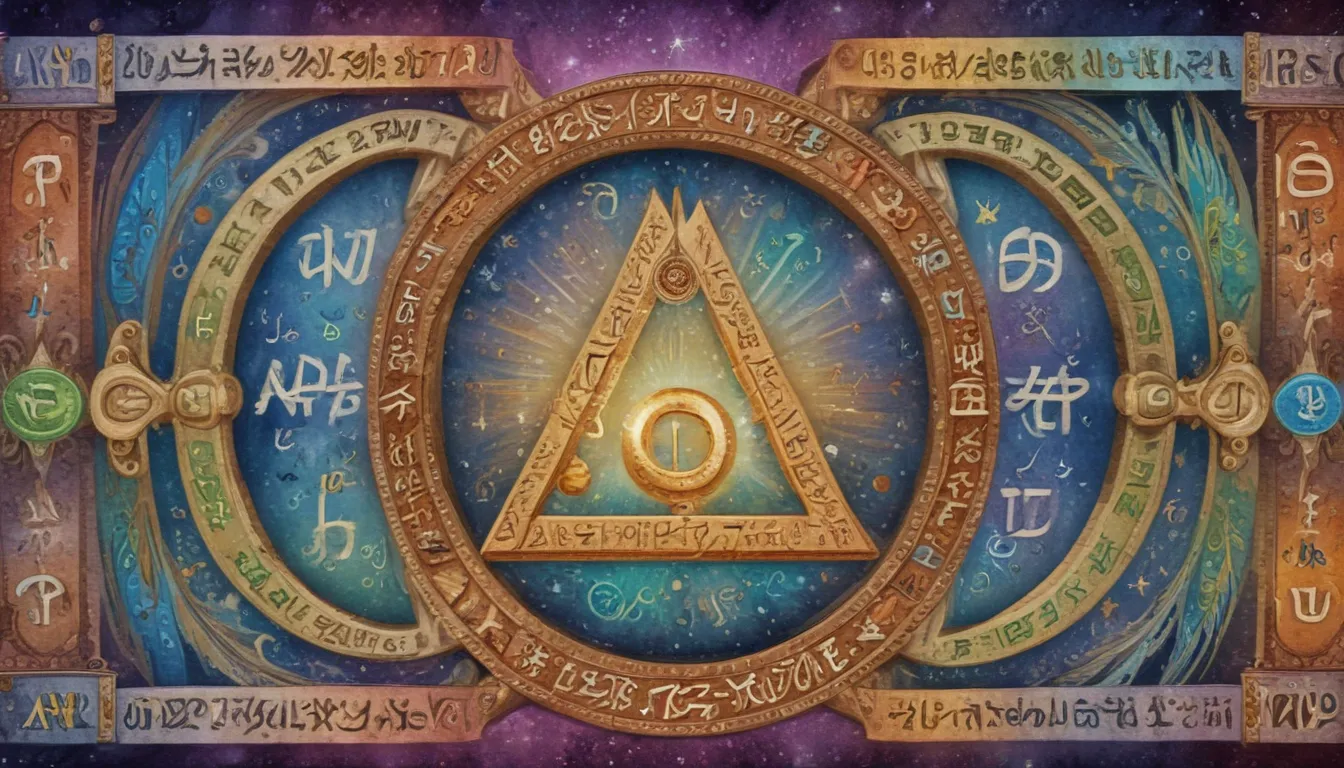
Are you intrigued by the mysterious and profound world of the Hebrew alphabet? Do you wonder about its origins, symbols, and spiritual meaning? Look no further. In this comprehensive guide, we’ll delve into the depths of the Hebrew alphabet to explore its significance in Jewish spirituality and how it can enhance your own personal journey.
Understanding the Hebrew Alphabet: A Brief Overview
The Hebrew alphabet is a consonantal script that has been used for over 3,000 years. It consists of 22 letters, each with its unique symbol and spiritual significance. The earliest known version of the Hebrew alphabet is called the Paleo-Hebrew or Ancient Hebrew script. Over time, it evolved into the modern Hebrew script we know today as the Ashkenazi script.
The Hebrew language has been the cornerstone of Jewish culture and spirituality for millennia. The letters of the Hebrew alphabet are not just symbols to write words; they are powerful tools for connecting with the divine. Each letter carries its own energy, vibration, and meaning, which can be harnessed for personal growth, healing, and spiritual development.
The Spiritual Meaning of Each Hebrew Letter
The spiritual meaning of each Hebrew letter is derived from its numerical value, which is associated with specific numbers in the Jewish mystical tradition known as Kabbalah. These numbers are believed to represent the building blocks of creation, or the “Ten Sefirot,” which serve as a blueprint for understanding the universe and our place within it.
Here’s an overview of the spiritual meaning and numerical value of each Hebrew letter:
- א (Alef) – The first letter of the Hebrew alphabet, representing the number one and symbolizing unity, beginnings, and potential.
- ב (Bet) – Corresponding to the number two, Bet represents duality, balance, and the concept of “above and below” in Jewish mysticism.
- ג (Gimel) – Associated with the number three, Gimel signifies harmony, wholeness, and connection to the divine through meditation and contemplation.
- ד (Dalet) – Representing the number four, Dalet is linked to stability, groundedness, and the creation of physical form in the material world.
- ה (Heh) – Corresponding to the number five, Heh symbolizes the human body, health, and well-being on all levels – physical, emotional, mental, and spiritual.
- ו (Vav) – Associated with the number six, Vav represents connection, binding, and the unity of opposites within the divine structure of creation.
- ז (Zayin) – Linked to the number seven, Zayin signifies strength, power, and the ability to overcome challenges and obstacles on our spiritual journey.
- ח (Het) – Corresponding to the number eight, Het represents new beginnings, transformation, and the process of spiritual growth through introspection and self-awareness.
- ט (Tet) – Associated with the number nine, Tet symbolizes the concept of teshuvah – returning to the divine source through repentance and forgiveness.
- י (Yod) – Representing the number ten, Yod signifies completion, manifestation, and the fulfillment of our deepest desires and aspirations.
- כ (Kaf) – Corresponding to the number 20, Kaf represents the concept of “keter,” or the crowning aspect of the divine, which symbolizes enlightenment, wisdom, and spiritual illumination.
- ל (Lamed) – Linked to the number 30, Lamed signifies guidance, leadership, and the ability to navigate through life’s challenges with clarity and purpose.
- מ (Mem) – Associated with the number 40, Mem represents the concept of “memet,” which means water or fluidity in Kabbalah. It symbolizes adaptability, flexibility, and the flow of spiritual energy within us.
- נ (Nun) – Corresponding to the number 50, Nun signifies stability, support, and the ability to overcome obstacles by drawing upon our inner resources and strengths.
- ס (Samekh) – Linked to the number 60, Samekh represents balance, harmony, and the integration of opposites within the divine structure of creation.
- ע (Ayin) – Associated with the number 70, Ayin symbolizes insight, intuition, and the ability to see beyond the physical realm into the spiritual realms.
- פ (Peh) – Corresponding to the number 80, Peh represents speech, communication, and the power of words to create positive change and transformation in our lives and the world around us.
- צ (Tsadi) – Linked to the number 90, Tsadi symbolizes justice, righteousness, and the ability to discern between what is true and false in our thoughts, actions, and beliefs.
- ק (Qoph) – Corresponding to the number 100, Qoph represents completion, wholeness, and the integration of all aspects of ourselves into a unified whole.
- ר (Resh) – Associated with the number 200, Resh symbolizes leadership, creativity, and the ability to manifest our desires and aspirations by taking bold action in alignment with our highest purpose.
- ש (Shin) – Corresponding to the number 300, Shin represents fire, transformation, and the power of divine will to shape our reality and create a world that reflects our deepest dreams and desires.
- ת (Tav) – Associated with the number 400, Tav signifies completion, fulfillment, and the return to the divine source through the process of tikkun – healing and perfecting ourselves and our relationship with the divine.
Practical Ways to Work with the Spiritual Meaning of the Hebrew Alphabet
Now that you have a basic understanding of the spiritual meaning of each Hebrew letter, let’s explore some practical ways you can work with these symbols to enhance your personal growth and spiritual development:
- Meditation: Choose one or more Hebrew letters to focus on during your meditation practice. Visualize the shape of the letter and contemplate its spiritual meaning, allowing the energy of the letter to flow through your body and mind.
- Journaling: Use the spiritual meaning of each Hebrew letter as a guide for journaling about specific aspects of your life or personal growth journey. For example, if you are struggling with finding balance in your life, focus on the letter Vav (which represents connection and unity) and write about ways you can bring harmony into different areas of your life.
- Mantras: Create a mantra using one or more Hebrew letters to help you develop specific qualities or characteristics associated with each letter. For example, if you want to improve your communication skills, focus on the letter Peh (which represents speech and communication) and repeat the mantra “Peh, help me speak my truth with love and clarity.”
- Affirmations: Use the spiritual meaning of each Hebrew letter as inspiration for creating affirmations that align with your personal growth goals. For example, if you want to cultivate more resilience in your life, focus on the letter Nun (which represents stability and support) and create an affirmation such as “I am a pillar of strength, grounded and supported by the divine.”
- Visualization: Use visualization techniques to connect with the energy and vibration of each Hebrew letter. Close your eyes and imagine each letter appearing before you in bright, radiant light. Allow the energy of the letter to fill your entire being, leaving you feeling empowered, enlightened, and connected to the divine.
Conclusion
The spiritual meaning of the Hebrew alphabet is a rich and complex subject that can deepen our understanding of ourselves, our world, and our place within the divine structure of creation. By exploring the symbolism and vibrational energy of each letter, we can unlock powerful tools for personal growth, healing, and spiritual development. So why not dive in and start your own journey into the mysterious and profound world of the Hebrew alphabet?





